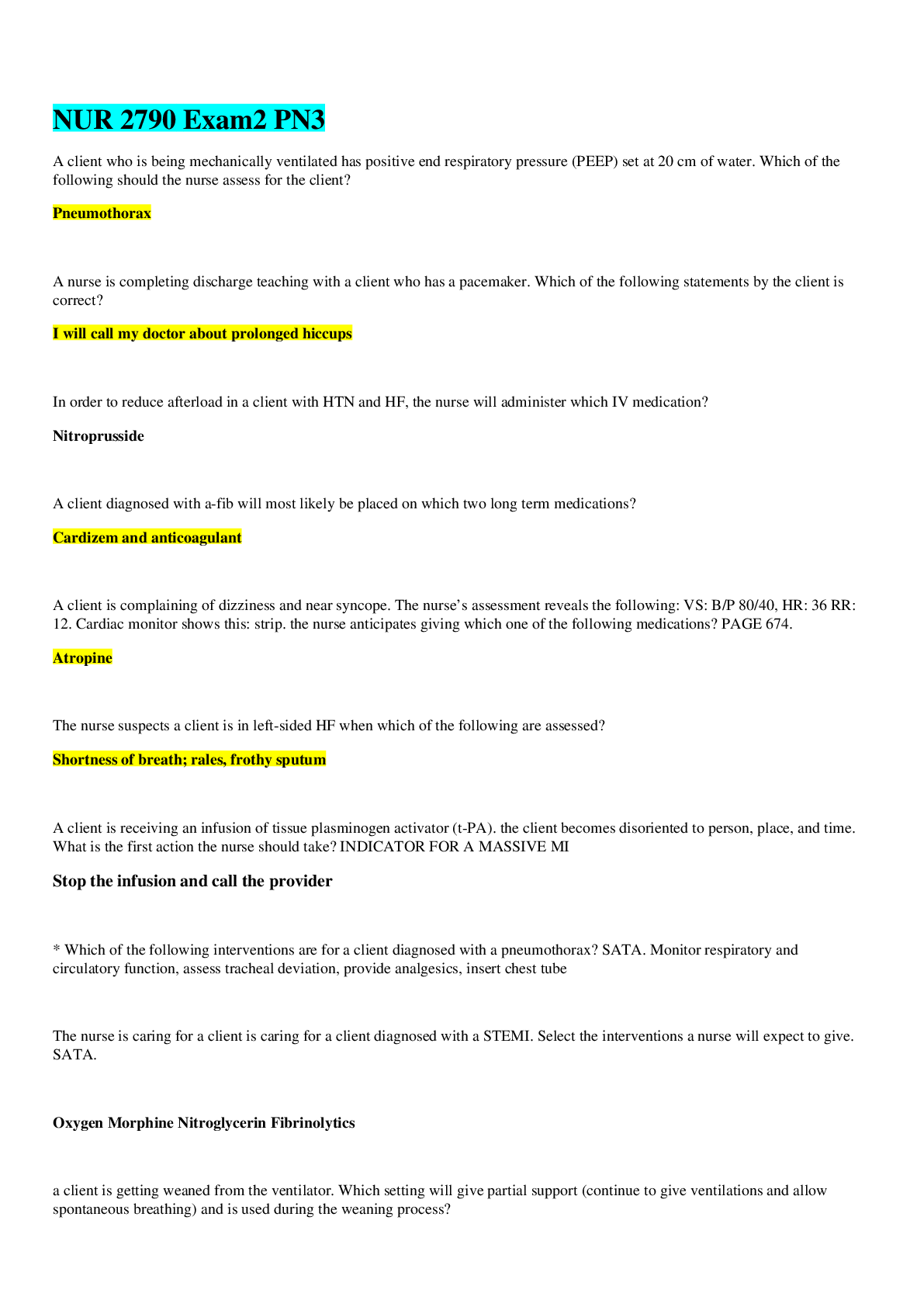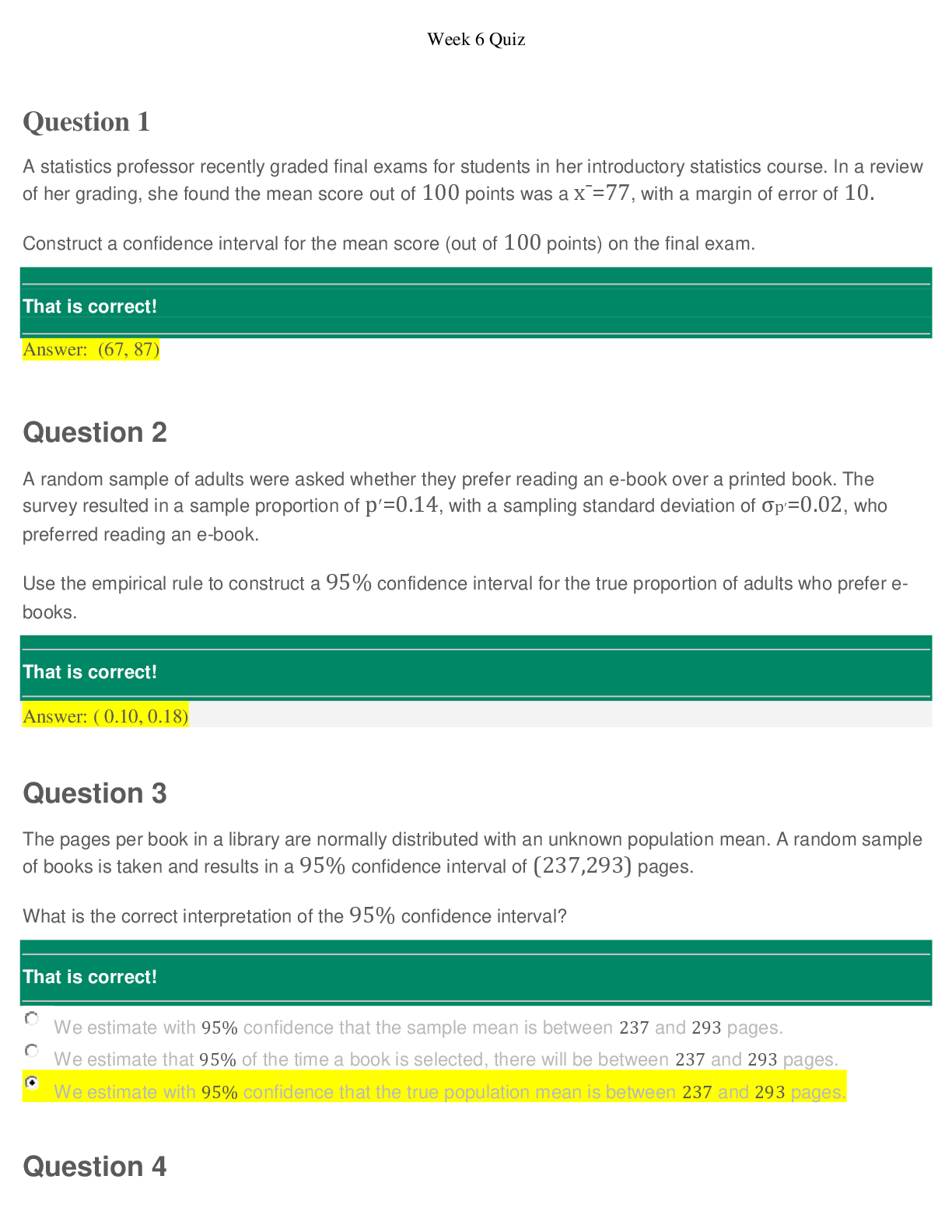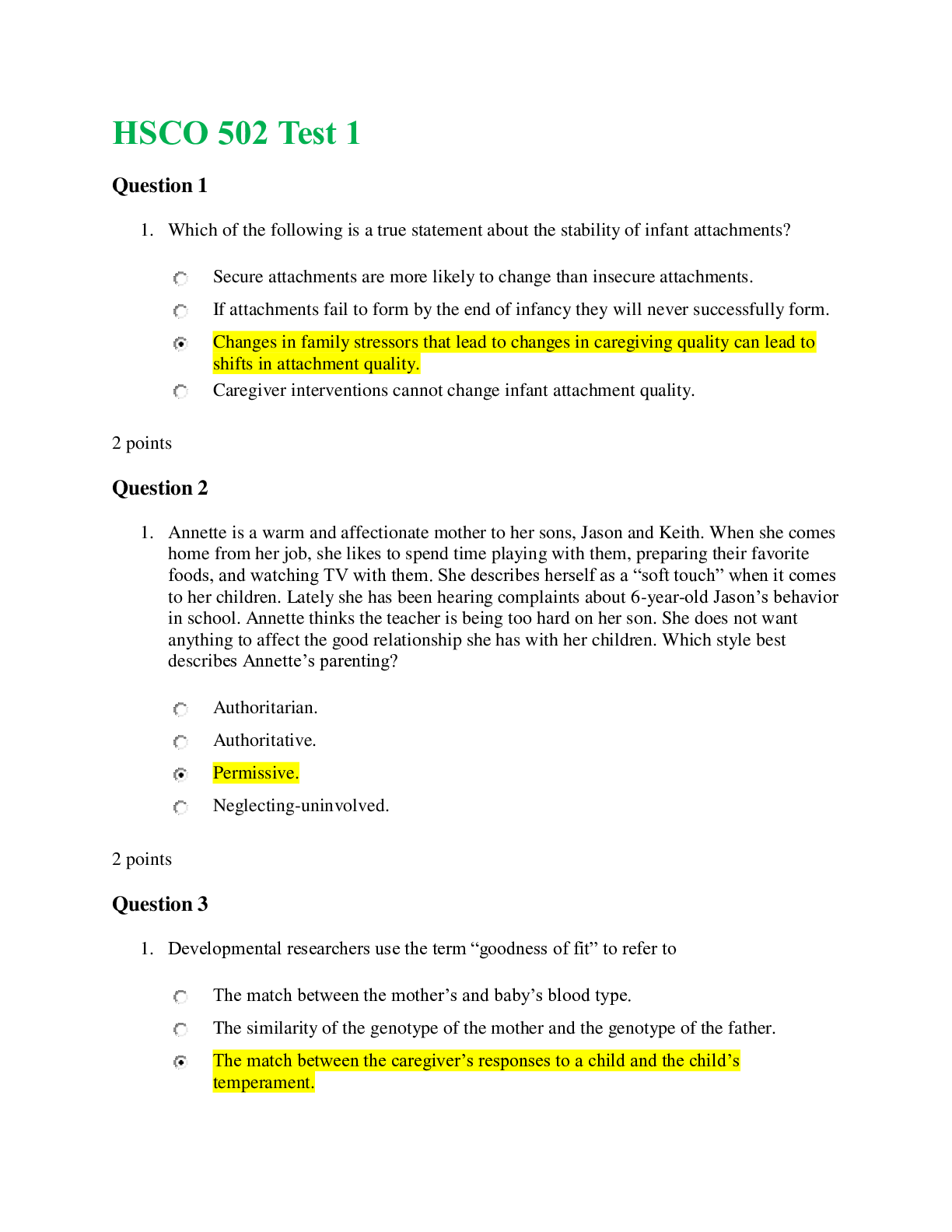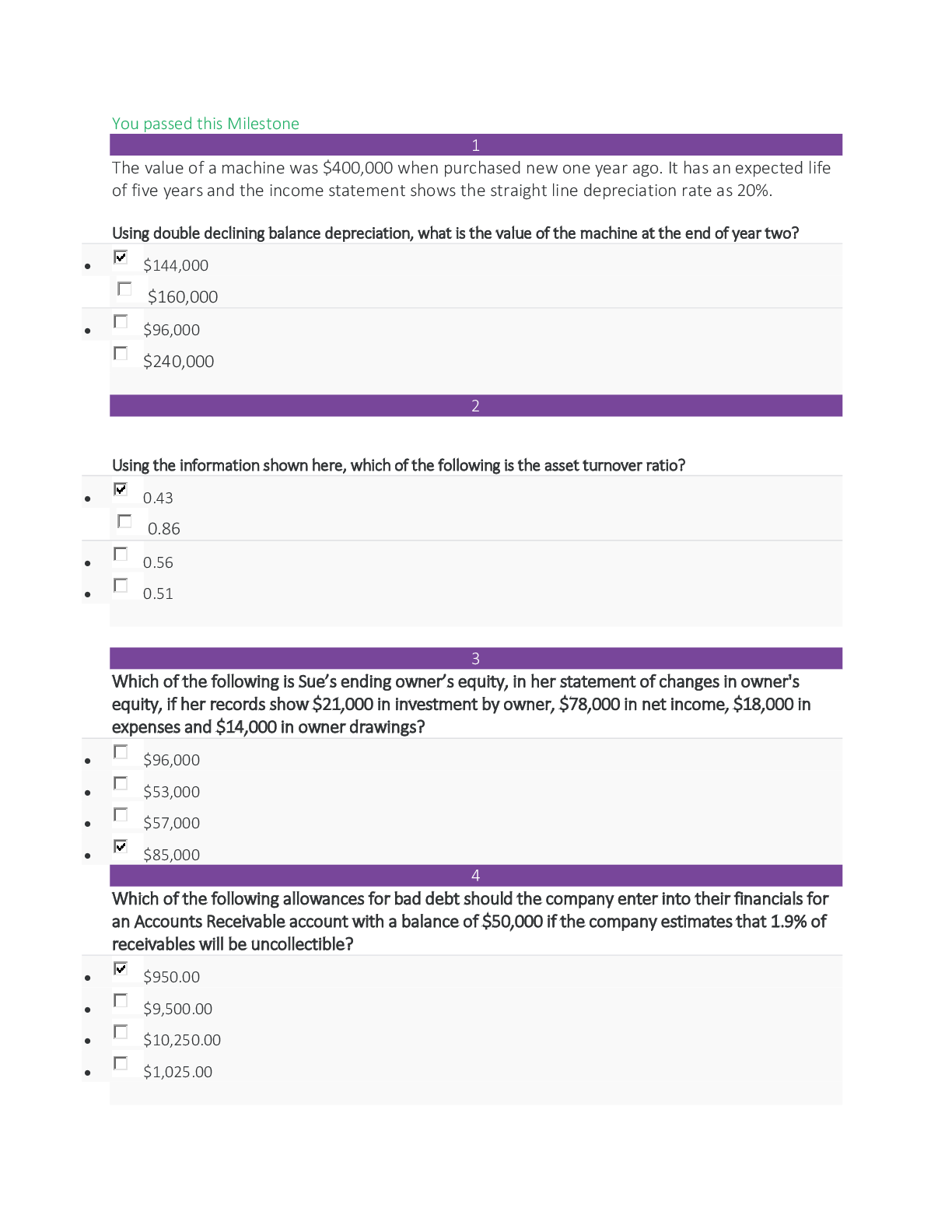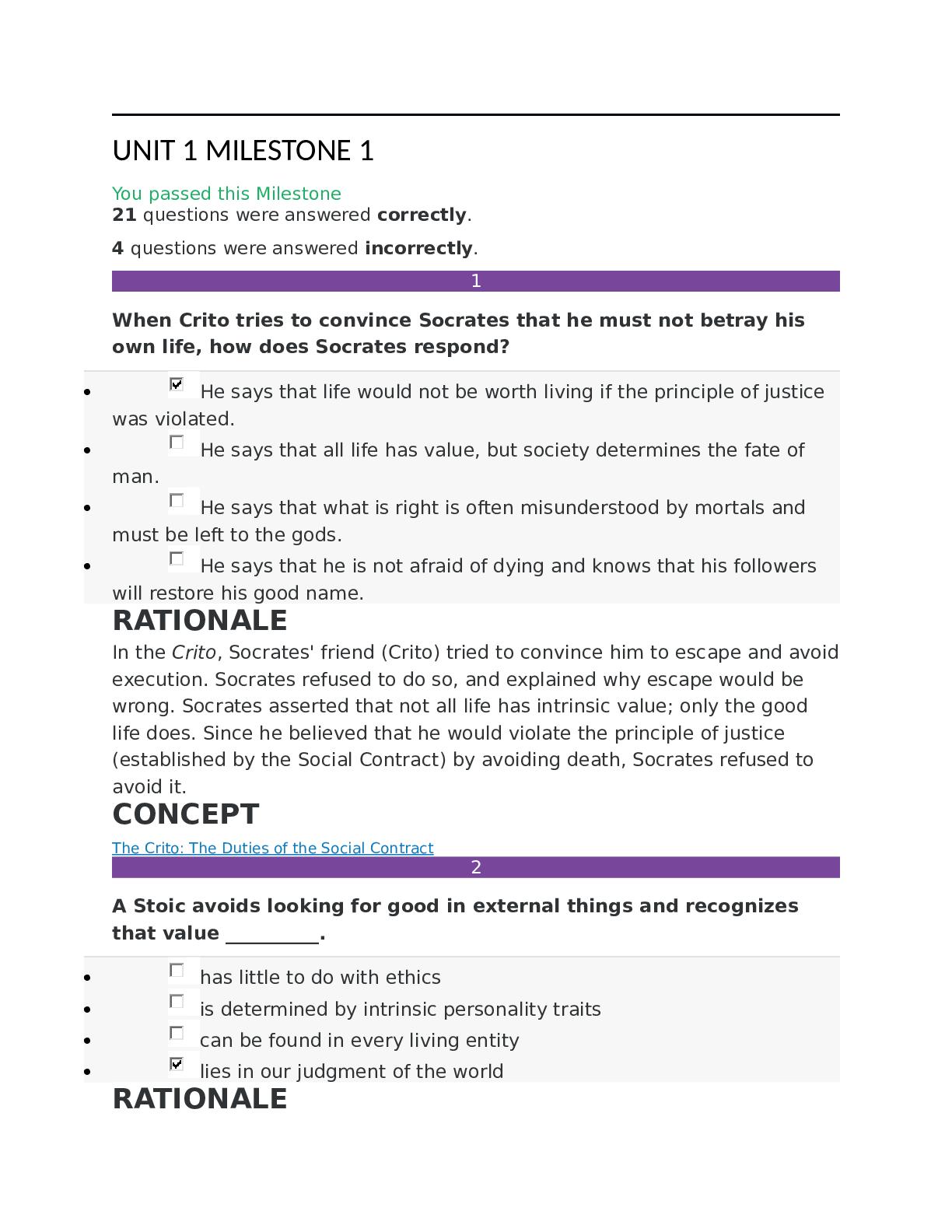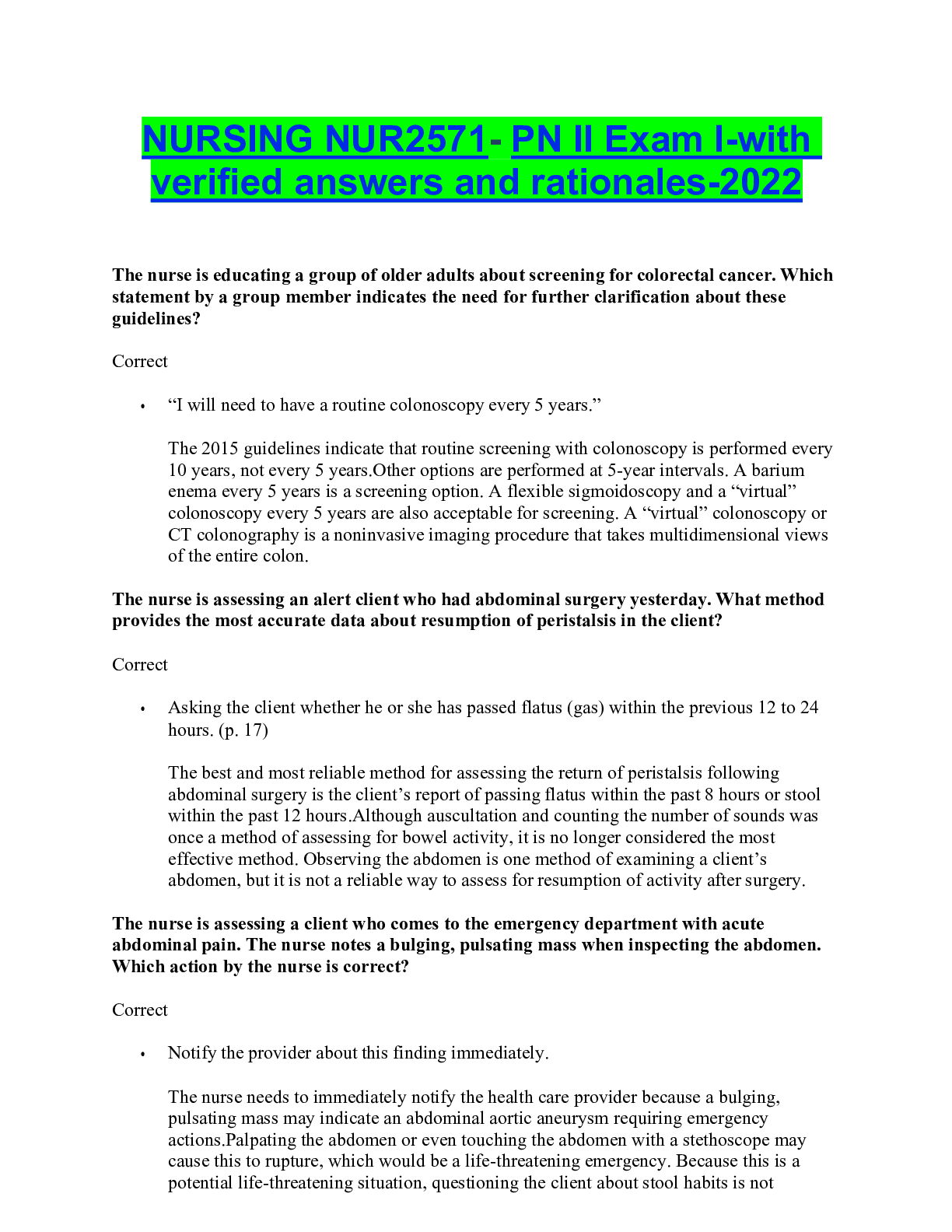*NURSING > EXAM > NUR2571| ATI med surg PN II Exam I - Complete Questions/answers/rationales|Already Graded A. (All)
NUR2571| ATI med surg PN II Exam I - Complete Questions/answers/rationales|Already Graded A.
Document Content and Description Below
NUR2571| ATI med surg PN II Exam I - Complete Questions/answers/rationales|Already Graded A. PN II Exam I The nurse is educating a group of older adults about screening for colorectal cancer. Which ... statement by a group member indicates the need for further clarification about these guidelines? Correct • “I will need to have a routine colonoscopy every 5 years.” The 2015 guidelines indicate that routine screening with colonoscopy is performed every 10 years, not every 5 years.Other options are performed at 5-year intervals. A barium enema every 5 years is a screening option. A flexible sigmoidoscopy and a “virtual” colonoscopy every 5 years are also acceptable for screening. A “virtual” colonoscopy or CT colonography is a noninvasive imaging procedure that takes multidimensional views of the entire colon. The nurse is assessing an alert client who had abdominal surgery yesterday. What method provides the most accurate data about resumption of peristalsis in the client? Correct • Asking the client whether he or she has passed flatus (gas) within the previous 12 to 24 hours. (p. 17) The best and most reliable method for assessing the return of peristalsis following abdominal surgery is the client’s report of passing flatus within the past 8 hours or stool within the past 12 hours.Although auscultation and counting the number of sounds was once a method of assessing for bowel activity, it is no longer considered the most effective method. Observing the abdomen is one method of examining a client’s abdomen, but it is not a reliable way to assess for resumption of activity after surgery. The nurse is assessing a client who comes to the emergency department with acute abdominal pain. The nurse notes a bulging, pulsating mass when inspecting the abdomen. Which action by the nurse is correct? Correct • Notify the provider about this finding immediately. The nurse needs to immediately notify the health care provider because a bulging, pulsating mass may indicate an abdominal aortic aneurysm requiring emergency actions.Palpating the abdomen or even touching the abdomen with a stethoscope may cause this to rupture, which would be a life-threatening emergency. Because this is a potential life-threatening situation, questioning the client about stool habits is not appropriate. The nurse is assessing a client who has come to the emergency department with acute abdominal pain. The client is very thin and the nurse observes visible peristaltic movements when inspecting the abdomen. What does the nurse suspect? Correct • Intestinal obstruction The nurse would suspect an intestinal obstruction related to peristaltic movements. Peristaltic movements are rarely seen except in thin clients. This needs to be reported to the HCP.Acute diarrhea does not cause visible peristaltic movements. Aortic aneurysm may cause a bulging, pulsatile mass. Pancreatitis is characterized by severe pain. . A client is admitted to the hospital with severe right upper quadrant (RUQ) abdominal pain. Which assessment technique does the nurse use for this client? Correct • Examines the RUQ of the abdomen last following all other assessment techniques. If the client reports pain in the RUQ, the nurse would examine this area last in the examination sequence. This sequence prevents the client from tensing abdominal muscles because of the pain, which would make the examination difficult.The sequence for examining the abdomen is inspection, auscultation, percussion, and then palpation. This sequence prevents the increase in intestinal activity and bowel sounds caused by palpation and percussion. The client would be positioned supine with the knees bent, while keeping the arms at the sides to prevent tensing of the abdominal muscles. If a bulging, pulsating mass is present during assessment of the abdomen, do not touch the area because the client may have an abdominal aortic aneurysm, a life-threatening problem. Notify the health care provider of this finding immediately! Which substance, produced in the stomach, facilitates the absorption of vitamin B12? Correct • Intrinsic factor Intrinsic cells are produced by the parietal cells in the stomach. This substance facilitates the absorption of vitamin B12. Absence of intrinsic factor causes pernicious anemia.Glucagon, which is produced by the alpha cells in the pancreas, is essential for the regulation of metabolism. Parietal cells secrete hydrochloric acid, but this does not facilitate the absorption of vitamin B12. Pepsinogen is secreted by the chief cells; *******CONTINUED (FULL DOWNLOAD)****** [Show More]
Last updated: 1 year ago
Preview 1 out of 43 pages
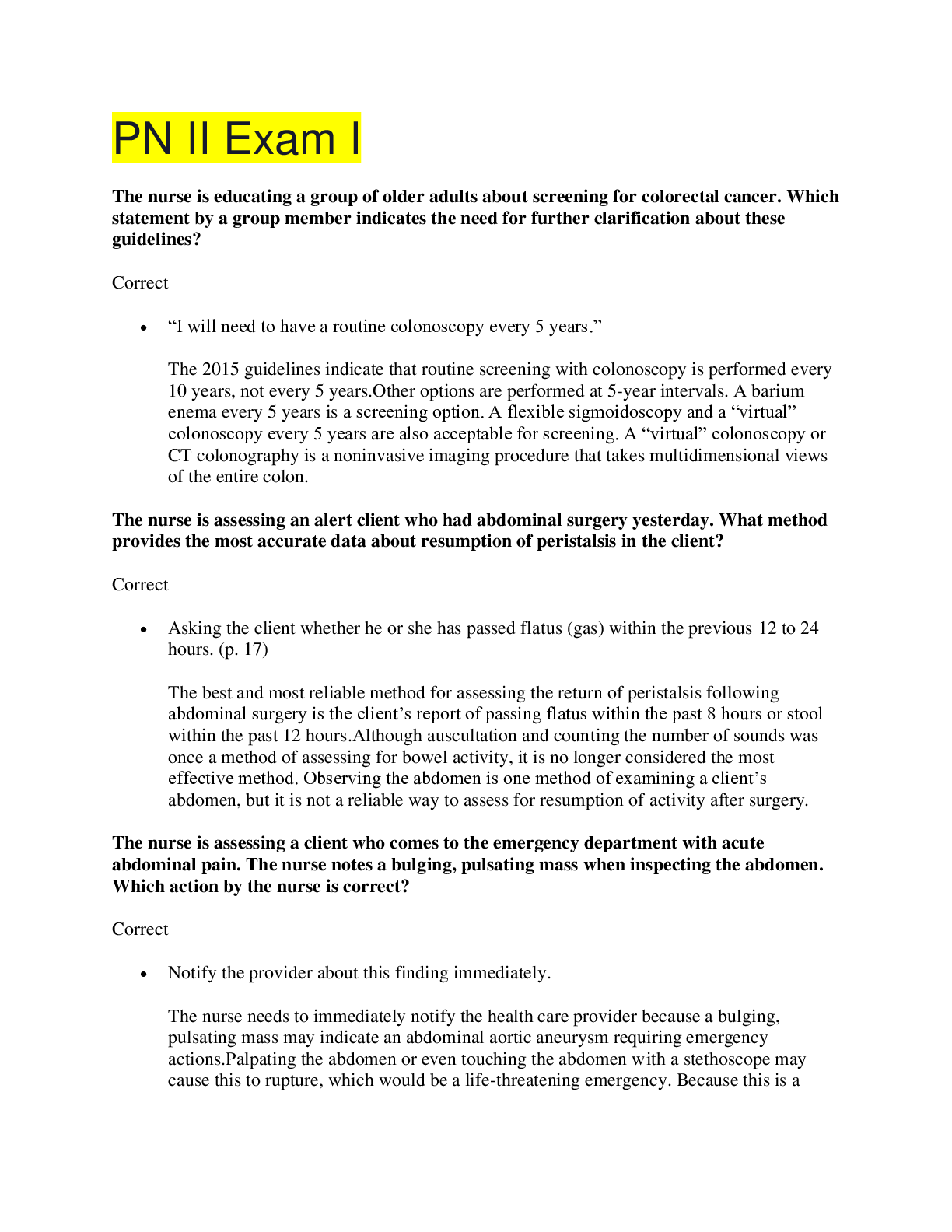
Buy this document to get the full access instantly
Instant Download Access after purchase
Add to cartInstant download
We Accept:

Reviews( 0 )
$19.00
Document information
Connected school, study & course
About the document
Uploaded On
Jun 14, 2020
Number of pages
43
Written in
Additional information
This document has been written for:
Uploaded
Jun 14, 2020
Downloads
0
Views
44



